Maastricht University Special Collections
The Maastricht University Special Collections is the heritage library of Maastricht University. The collections are part of the closed stacks department of the University Library which is housed in Grote Looiersstraat 17, a historic building dating back to 1757.[1] The collections are of significant value to society, education and research. The diversity of nationalities of the writers and publishers in the collections reflect Maastricht as a thriving cultural and regional hub.[2]
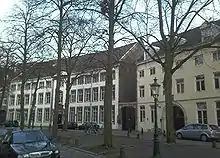
The largest and most important special collection of Maastricht University is the Jesuit library which consist of more than 250,000 volumes of books with scientific, legal, as well as theological significance. Other notable items in the library's collections include prize books, travel books, and books printed in Maastricht.[3]
Several collections are especially focused on Limburg notables such as the personal library of Limburg poet Pierre Kemp (1886–1967), the documentation collection by painter Charles Eyck (1897–1983), and the personal library of chemist and Nobel laureate Peter Debye (1884-1966). The library also holds the personal library of Dutch illustrator Bernhard Reith (1894-1974) and many Dutch periodicals from 1840-1950.[3]
History
In the course of the 1970s, many theological faculties were restructured or closed, including the Canisianum, a school for young priests in Maastricht. A number of these institutions had impressive library collections which were distributed after they closed down. In the beginning, the Jesuit library was to be relocated to a theological school in Amsterdam. However, it was sold to the newly established State University of Limburg (now Maastricht University).[4] The university library later expanded their collection by purchasing books from other institutions such as the institutional library for missiology, arabica and religious sciences from Maastricht, Mariëndaal from Grave, the Berchmanianum from Nijmegen and the Groot-Seminarie from Warmond. The total books bought from these institutions amounted up to 250,000 volumes.[5]
In the beginning it was thought that the Jesuit library consisted of only religious books.[6] In 1982, Professor Spruit from Utrecht University clarified that since the Jesuits also studied topics other than religion, it is most likely that the books contained a vast amount of other topics other than religion. From 1983 until 1987, the books were assessed and catalogued.[7] In 1992, a selection of damaged books were restored.[8]
Jesuit Library
The Jesuit library includes about 250,000 volumes, mainly in the fields of theology, philosophy, history, literature, law and various social sciences (sociology, psychology, anthropology and economy).[1] In this sense, it is a broad classics collection that provides an important source for research and education activities at the different university faculties. The oldest books date back to the end of the 15th century; the most recent to the 1970s.[1] In 2012, part of the Jesuit library (mainly theology) was relocated to the library of the theology department of the Katholieke Universiteit Leuven, the Maurits Sabbebibliotheek (GBIB).[3] This library has the collection on loan for educational and research purposes.
Prize Volume Collection
The Jesuit library includes a prize volume collection, also known as the prize books. From the late 16th century up until 1876, Latin schools were responsible for students’ pre-university education. In these schools, competition played an important role: the students from the lower classes who had performed well and graduated to higher classes, including the 'Primus' (top of the class) or the 'Secundus' (the second best), received a fancy, bound prize book as a reward from their scholars or governors – the school principals of the time.[9] The front jackets of the books were usually decorated with the city's official coat of arms. The University Library's prize volume collection currently houses a total of 141 of them. In 2007, they officially became a separate special collection.[9]
Travel Books
The Jesuit Library also includes many lavishly illustrated travel books, which primarily date from the 17th and 18th centuries. The travel books do not only address Catholic missionary zeal but also deal with trade missions and scientific expeditions. The books document explorations of both the Old World and the New World and are of particular interest since not all of the travel books were written by actual Jesuits.[1] This lends to the diversity of the works as they are based in the different backgrounds of the authors; scientific, religious, military and commercial. These travel books are indicative of not only the cultures explored by the travellers, but also the cultures of the travellers themselves.[10] This point of comparison has generated much interest and has been the focus of different Maastricht University activities, such as the MaRBLe research project 'On Expedition' and a study trip through China where students retraced the steps of missionaries described in 17th century Jesuit travelogues.[10][11]
Maastricht Prints
Over the past 450 years, dozens of printers were active in Maastricht.[12] It is estimated that all together they printed hundreds of thousands of books. The Maastricht University Library, the Centre Céramique and the Regional Historic Centre Limburg store in their depots about 7,500 unique titles once printed in Maastricht. The library includes books printed by Boucher, Dufour & Roux, Landtmeter, Veltman and Leiter-Nypels among others.[12] The oldest Maastricht prints in the Maastricht University Special Collections date back to 1649. The project Gedrukt in Maastricht provides a complete overview of Maastricht prints in the three heritage collections.
Acquisitions (Limburg)
Pierre Kemp library
In 1994 the Maastricht University Library acquired the personal book collection of the Maastricht Poet Pierre Kemp (1886-1967). The collection covers a wide range of subject areas including fairytales, myths, legends, art history, music, children's toys, poetry and anthologies. Many of his books also have museological value because of the margin notes and because Kemp had part of them covered in specially coloured flypaper.[13][14]
Pierre Kemp's letter and handwriting collection
Acquired in 2002 and subsequently complemented through gifts, this collection contains Kemp's correspondence with then curator of the Literary Museum in The Hague Dr. Harry G.M. Prick and a considerable collection of handwritten and typed versions of Kemp's poems.[15] In addition, this collection contains drawings, phonograph records and even a painted egg with a poem written in golden ink. Unique in Kemp's graphic work are his eleven colourful choreographic fantasies dating back to the 1930s, inspired by the works of innovative theatre artists and scenographers in the United States. Another unique piece in the collection is the Liber Amicorum presented to Kemp in 1956.[16] It contains contributions from almost all the great names in Dutch poetry of that time, including Gerrit Achterberg, A. Roland Holst, S. Vestdijk and Lucebert. It also contains illustrations from several visual artists.[17]
Charles Eyck documentation collection
In 1996, collector, journalist and publicist Wim Aerts offered a collection of memorabilia from the Limburg painter Charles Eyck to Van Gendt Book auctioneers. Maastricht University bought the entire collection, and in the years that followed, added some smaller purchases and gifts. Aerts and Eyck had developed a friendship, reflected by their numerous correspondence between 1977 and 1983.[18]
The library collection contains the letters that Eyck had sent to Aerts. This documentation collection is only available in Dutch. The letters sent by Aerts are still in the Charles Eyck archives, managed by his son Ragnar. As Eyck came to regard Aerts as his future biographer, the correspondence contains much biographical data and opinions on almost all aspects of the artist's life and work.[18]
Besides written material, the collection contains many pictures, many of these taken by Eyck himself. He took pictures as a source of inspiration, created photomontages for large canvases and used photos as mnemonic devices in addition to sketches and scrawls. This gives us some understanding of how much of his work was created.[18]
The entire collection stretches approximately eight metres and has been made accessible through a classical archive inventory.[18]
Debye Collection
Another collection of Limburg origin is the personal book collection of the Maastricht physicist Peter Debye (1884-1966), Nobel laureate in chemistry in 1936. It was donated by the heirs of Debye to the Maastricht Town Library at the end of the 1960s, and transferred to the Maastricht University Library about 1996. The collection contains books and scientific reports, as well as some journals, obtained by Peter Debye after his arrival in the United States in the early 1940s.[19] It includes most of Debye's own publications, numerous books on polymer science (his new field in the USA), titles on theoretical physics and on X-ray diffraction, publications of scientific societies and academies (of which Debye was a member), books and reports related to his advisory contacts with industrial research organisations (Esso Research and Engineering; DuPont; Celanese; BASF; Hoechst; Philips), histories of universities that awarded him honorary doctorates, and publications of the Robert A. Welch Foundation.[19]
Other acquisitions
Reith Library
The Maastricht University Library houses the personal library of Dutch illustrator [Bernard Reith] (1894-1974), an art and art history teacher of the Jesuit St. Ignatiuscollege in Amsterdam. Reith is known for his illustrations for Louis Couperus 'Psyche' published in 1927. The Reith library contains over one thousand illustrated, written and collected works about the art of illustration, art history and drawing. It was acquired by the library in 2005.
Golden Age Illustration Books
Reith's personal library contains more than sixty books illustrated by Golden Age illustrators, including artists such as Arthur Rackham, Edmund Dulac, Kay Nielsen, and Willy Pogany. The Golden Age of Illustration is a period of excellence in book and magazine illustration that occurred around the 1880s and ended around the 1920s.[20] In Europe, artists were influenced by the Pre-Raphaelites and design oriented movements such as the Arts and Crafts Movement and Art Nouveau. American illustration during this period was influenced by the Brandywine Valley tradition as started by Howard Pyle.[21] Factors that led to the golden age of illustration include: new printing techniques, cheap paper production, and better infrastructure. The Golden Age of Illustration came to an end in the 1930s when photography started to advance.[22]
Dutch Periodicals
Het Weekblad van het Regt (1839-1943)
One of the many Dutch Periodicals is ’Het Weekblad van het Regt’. It is a collection of legal affairs magazines which served as reference work for jurisprudence in the Netherlands. In 1884, the name of the journal changed to 'Het Weekblad van het Recht, rechtskundig news- en advertblad '.
‘Het Weekblad’ is not only an important source of legal history research, but also relevant to current legal practice. It also provides good insight into social and societal developments in the period 1839-1943. With financial support from the Academic Heritage Maastricht Fund, all 13,865 Weekblads have been digitized and made searchable.
Use and Outreach
The library promotes its Special Collections to wider audiences and regularly organises tours, exhibitions and events based on and using the various works in the collections.
There is an annual Spoken Word evening carried out with Boekhandel Dominicanen during Museumnacht in Maastricht. The Maastricht University library also has collaborations with the Centre Céramique and the Regional Historical Centre to organise events that will promote the access to and use of the Special Collections.
Maastricht University Library aids educational courses such as Art and Medicine and Style and Modernity by encouraging the usage of books from the Special Collections, as well as providing opportunities for students to conduct researches based on these books.[23] The following are programs that have used books from the collection in their activities.
Wikipedia Education Program
The Wikipedia: Benelux Education Program is a part of the Wikipedia education program which involves three countries: Belgium, the Netherlands and Luxembourg.Their goal is to help educational institutions (such as universities, colleges and others) to make their knowledge and expertise available to the public via Wikipedia and Wikimedia.[24] In Belgium and the Netherlands several projects have been set up in recent years within educational institutions to gain a better understanding of Wikipedia, and in collaboration with Wikipedia/Wikimedia students and staff of educational institutions share their knowledge on Wikipedia. The Benelux Education Program] is designed to coordinate education and provide support to institutions that get started with Wikipedia.[24]
Since 2014 various activities and courses take place in which users from Wikipedia, Wikimedia Nederland, and Maastricht University work together.[25] The outcome from this collaboration are articles produced by the students, based on the books from the special collections via programs such as the MaRBLe course: On Expedition as well as the Historical Book Review by Maastricht University's psychology students.
MaRBLe course: On Expedition
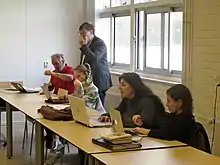
The Jesuit Collection of the University Library in Maastricht houses a collection of over 250,000 volumes, including several hundreds of often lavishly illustrated travel books.[1] The international mindset of the Jesuits seems to be suitable for the international student population in Maastricht today. ‘On Expedition’ project was initiated in 2013 within the framework of the Maastricht Research Based Learning (MaRBLe) programme and the Honours programme – in close cooperation with the University Library.[26]
The aim of this research-based learning project was to link research and teaching in such a way, that undergraduate students would be stimulated to do research themselves, preferably as independently as possible.[26] The ‘On Expedition' project was strongly student-centred. The students were given the opportunity to undertake the research themselves. They had to choose from several books which they would write an article, or part of an article, about on Wikipedia.[26]
Several of the latest articles that were written by the MaRBLe students include:
- Valladolid debate
- Les Belges dans l'Afrique Centrale
- Francis Rawdon Chesney
- An Authentic Account of an Embassy from the King of Great Britain to the Emperor of China
- Diary of H.M. the Shah of Persia during his tour through Europe in A.D. 1873
- China Illustrata
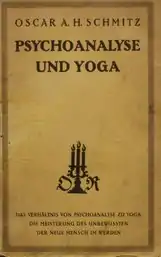
Historical Book Review (Psychology Books)
As a part of the Wikipedia: Benelux Education Program, psychology students at Maastricht University were given the chance to participate in a project called the Historical Book Review.[27] The objective of this project is to write a review about an interesting, important, and/or peculiar psychology related book from Maastricht University's Special Collections and to publish it on Wikipedia. The students were shown examples of psychology ‘classics’ from the Special Collections in which they used in their review.[27]
Following are several of the latest reviews of the books chosen by the students:
Art and Medicine
The Maastricht University Library also organises the opening of the elective course on art and medicine.[23] Under the title 'Does perception of art make you a better doctor?’, a different theme is drawn weekly from the triangle of art, medicine and the senses. The course consists of training, research, workshops, lectures and interviews.[23] The University Library provides this block opening together with the Jan Van Eyck Academy and the Faculty of Health, Medicine and Life Sciences which includes activities such as lectures, guided tours and assignments about anatomical atlases in the Special Collections.[23]
Style and Modernity
The University Library assisted with a university course called Style and Modernity.[23] In this course on the history of Western art in the nineteenth and twentieth centuries, students explore concepts such as style, modernity, modernism and avant-garde based on books from the Special Collections.
Maastricht Antiquarian Book & Print Fair
The annual Maastricht Antiquarian Book & Print Fair (MABP) is one of Europe's leading antiquarian book events, taking place during the opening weekend of The European Fine Art Fair (TEFAF). More than twenty-five prestigious booksellers will team up to present the most precious, most valuable, most interesting items from their collections such as rare first editions, incunables, antique maps, but also more recent special editions and other collectibles.
The Maastricht University library regularly collaborate with other institutions such as the Centre Céramique and the Regional Historic Centre Limburg to organise exhibitions of the books from the Special Collections at the MABP. Past exhibitions included the themes travel books, atlases and herbal books.[28]
Spoken Word
Spoken word is an event that is held every year during Museumnacht Maastricht (Museum night Maastricht) since 2016. It is held in the Dominicanen Bookstore and organised by Maastricht University Library. Interested students have the chance to give theatrical performances using books from the Special Collections for inspiration. In 2018, since the theme of the Museumnacht was ‘Lucky/Unlucky’, the students were shown some books that touch on the topics of apocalypse, prophecy, and superstitions.[29]
Two Girls in China

In August 2016, two students from Maastricht University, Samantha Jenkins and Angelica Giombini, were sent to trace back the steps of the Dutch Jesuits travellers in China. The expedition is called Two Girls in Two Girls in China.[11]
The Jesuits whose steps they followed were based on a map in Kircher's China Illustrata. Jenkins and Giombini retraced the routes followed by Albert Dorville and Johann Grueber who traveled together from Beijing, through Tibet and into India where Dorville died. Unfortunately, wandering into Tibet and India was not possible, and so the girl's journey had to end at the border of Tibet, near Larung Gar.[30]
Holdings
The Special Collections consists of numerous books in a plethora of topics, from religion to medicine and biology. Most of the books are either in Latin, French, Dutch, or German. Only a few of the books are in English or other languages. The following are highlighted books from the holdings:
Religion
The major library in the Special Collections is the Jesuit Library and a vast amount of religions books can be found in said library. Some of most notable in the collections are the 15th and 16th century books listed below:
- Gerson (1488). De immitatione christi et de contemptv mvndi in vvlgari sermone. Impressa a Venetia: Per Ioanne Rosso.
- Van Liesvelt (1534). Den bibel met grooter neersticheyt gecorrigeert, en̄ op die canten gheset den ouderdom der werelt, ende hoe lange die gheschiedenissen ende historien der bibelen elck int zijn voor christus gheboorte gheweest zijn, ende daer bivergadert wt fasciculus temporum, ende wt dye cronike vā alder werelt, die principael historiē der machtiger heydenscher conincrijckē, daer die heylige scrift oock dickwils af vermaent, tot een claerder verstant der bibelscher historien, ende oock een onderscheyt der tijden te hebben. Gheprent Thātwerpē ...: By mi Jacob van Liesuelt.
- Biblia sacra ad optima quæque veteris, & vulgate translationis exēplaria summa diligentia, pariq; fide castigata : Cum hebraicorum, chaldæorum & græcorum nominū interpretatione. (1567). Lvgdvni: Apvd Gvliel. Rovillivm.
Cartography
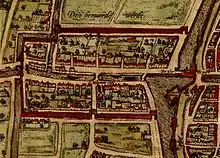
The Jesuits travelled the world extensively in their missionary pursuits and often they would map their journey to these new places. When the University Library acquired the Jesuit library, they also acquired the maps and atlases that came with it. Highlighted maps and atlases include those from Braun and Mercator which focus on cities and countries, respectively:
Ethnography and Anthropology
As missionaries it was common for the Jesuits to settle down in a chosen area for a length of time to spread the word of Christ. In doing so, they would also record the lives of the locals. These records were then published and kept in their holdings. Thus, the Jesuit Library also contains ethnography and anthropology books that immortalised the lives and cultures of particular communities. These books were also used by students of the MaRBLe programme in their research thesis.
Highlights of ethnography and anthropology books include Kircher's book on China and a Dutch East-India Company's publication on the Old and New East-Indies:
- Kircher (1667). Athanasii kircheri e soc. jesu china monumentis qua sacris quà profanis, nec non variis naturæ & artis spectaculis, aliarumque rerum memorabilium argumentis illustrata, auspiciis leopoldi primi roman. imper. semper augusti munificentissimi mecænatis. Amstelodami,: Apud Joannem Janssonium à Waesberge & Elizeum Weyerstraet.
- Valentyn (1724). Oud en nieuw oost-indiën, vervattende een naaukeurige en uitvoerige verhandelinge van nederlands mogentheyd in die gewesten, benevens eene wydlustige beschryvinge der moluccos, amboina, banda, timor, en solor, java en alle de eylanden onder dezelve landbestieringen behoorende : Het nederlands comptoir op suratte, en de levens der groote mogols ; als ook een keurlyke verhandeling van 't wezentlykste, dat men behoort te weten van choromandel, pegu, arracan, bengale, mocha, persien, malacca, sumatra, ceylon, malabar, celebes of macassar, china, japan, tayouan of formosa, tonkin, cambodia, siam, borneo, bali, kaap der goede hoop en van mauritius. Te Dordrecht: By Joannes van Braam.
Medicine
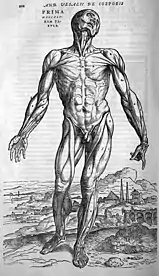
The University Library also holds books concerning early medical science which includes anatomy, psychology, surgery and many other branches of medical science.[1] These books have been used in Maastricht University faculties and courses as an aid to their learning process. This includes programs and courses such as the Psychology Book Review and Arts and Medicine, and Style and Modernity.[23]
The following books are examples of the many medicine books in the holdings. Both of them focus on surgery and dated as far back as the 17th century:
Biology
The biology section is another important category within the Jesuit collections. This section consists of zoology, entomology, herbal books, taxonomy, and many others.[1] The herbal books were exhibited in 2017 at the Centre Céramique, Natural History Museum and the Maastricht Antiquarian Books and Prints Fair.
The highlights showcase herbal books by early European botanists such as Dalechamps and Dodoens:
- Dalechamps & Des Moulins (1653). Histoire générale des plantes, contenant xviii livres egalement departis en devx tomes (Dernière edition, reveuë, corrigée ed.). A Lyon: Chez Philip. Borde, Laur. Arnaud, & Cl. Rigaud.
- Dodoens (1644). Crvydt-boeck remberti dodonæi, : Volghens sijne laetste verbeteringhe: Met biivoeghsels achter elck capitel, uyt verscheyden cruydt-beschrijvers: Item, in 't laetste een beschrijvinghe vande indiaensche ghewassen, meest ghetrocken uyt de schriften van carolvs clvsivs. nu wederom van nieuws oversien ende verbetert. T'Antwerpen,: Inde Plantijnsche druckerije van Balthasar Moretus.
Friends of the Maastricht Academic Heritage Fund
Founded in 2012 the Friends of the Maastricht Academic Heritage Fund aims to draw more attention to the Special Collections at Maastricht University and to make this academic heritage available for education and research. Restoration of books is promoted by an Adopt-a-book program.[31] Furthermore, it contributes to managing and acquiring the collections and provides access to them for a broad spectrum of interested public, both in the region and elsewhere. The Friends of the Maastricht Academic Heritage Fund is a named fund under the responsibility and management of the University Fund Limburg.[31]
Pierre Kemp Fund
Established on 1 December 2014 the Pierre Kemp Fund aims to preserve and expand Kemp's heritage. The Fund promotes his works and makes them accessible and available for everyone. Chair of the foundation board is poet and emeritus professor of General and Dutch Literature Wiel Kusters, who wrote a biography on Kemp in 2010. Other members of the board are Kemp-relative Wies Neuhof-Meijs and director of the University Library Maastricht Ingrid Wijk.[32]
Sources
- Artcyclopedia. (2015). Artists by Movement: The Golden Age of Illustration. http://www.artcyclopedia.com/history/golden-age.html
- Cobben, N., Gilbert, J., & Boonen, W. (1996). Uit de oude doos. in: Jägers, G., Klinkeberg, J., & Ruwe, M. de. (1996). Behouden en beheren, benutten en begeren. Maastricht: Universitaire Pers Maastricht.
- Ruwe, M. de. (1996). Onverwachte rijkdom: een inleiding. In: Jägers, G., Klinkeberg, J., & Ruwe, M. de. (1996). Behouden en beheren, benutten en begeren. Maastricht: Universitaire Pers Maastricht.
- Stijfs, J. (2005). Limburgs Boek Juweel. Maastricht: Stichting Historische Reeks Maastricht.
- The R. Atkinson Fox Society. (2012). What was the Golden Age of Illustration? http://www.rafoxsociety.com/what-was-the-golden-age-of-illustration/
External links
- Special Collections Maastricht University Library - Official Website
- Wikipedia Education Program Maastricht
- Dutch Periodicals - Weekblad van het Regt (only in Dutch)
- Printed in Maastricht (only in Dutch)
- Two Girls in China Project
- MaRBLE Programme
- Maastricht University Library (only in dutch)
References
- Behouden en beheren, benutten en begeren : boekje open over de Jezuïetencollectie van de Universiteit Maastricht. Jägers, G. J. M. (Guy Jacques Marie), 1954-, Klinkeberg, Jacqueline, 1962-, Universiteit Maastricht. Maastricht: Universitaire Pers Maastricht. 1996. p. 123. ISBN 9052782237. OCLC 68546047.CS1 maint: others (link)
- Stijfs, 2005, p. IX
- "Jesuit collection - About UM - Maastricht University". www.maastrichtuniversity.nl. Retrieved 2018-11-13.
- Cobben, Gilbert & Boonen, 1996, p. 17
- Cobben, 1996, p. 18
- Ruwe, 1996, p. 9
- Ruwe, 1996, p. 10
- Ruwe, 1996, p. 13
- "Prize volume collection - About UM - Maastricht University". www.maastrichtuniversity.nl. Retrieved 2018-11-13.
- Encountering 'the Other' : travel books on North-America, Japan and China from the Maastricht Jesuit Library, 1500-1900. Homburg, Ernst, 1952-, Klijn, Annemieke, 1956-. [Maastricht]. 2014. ISBN 9789056814328. OCLC 881886223.CS1 maint: others (link)
- "Two Girls on Expedition in China - Maastricht University Library". Two Girls on Expedition in China. Retrieved 2018-11-13.
- "Blog - Gedrukt in Maastricht". www.gedruktinmaastricht.nl (in Dutch). Retrieved 2018-11-13.
- "Pierre Kemp collection".
- "Boeken uit het bezit van Kemp".
- "Inventarisatie van de handschriftencollectie Kemp".
- "Liber Amicorum".
- "Maastricht krijgt Pierre Kemppark". Gemeente Maastricht. 25 September 2017. Retrieved 23 December 2018.
- "Charles Eyck documentation collection - About UM - Maastricht University". www.maastrichtuniversity.nl. Retrieved 2018-11-13.
- "Peter Debeye collection".
- "Golden Age Of Illustration". virtualology.com. Retrieved 2018-11-13.
- Artcyclopedia, 2015
- the R. Atkinson Society, 2012
- "Bijzondere Collecties in het onderwijs - Online Library | Maastricht University". Online Library | Maastricht University. 2018-06-21. Retrieved 2018-11-13.
- "Wikipedia:Benelux Education Program", Wikipedia, 2018-11-19, retrieved 2018-12-23
- "Maastricht students go Wiki - Online Library | Maastricht University". Online Library | Maastricht University. 2014-05-15. Retrieved 2018-11-13.
- Klijn, Annemieke; Homburg, Ernst (2017). "On Expedition – Travels Into the Unknown: A Research-based Learning Project at the Faculty of Arts and Social Sciences". Research-Based Learning: Case-studies from Maastricht University. doi:10.1007/978-3-319-50993-8_6.
- "Wikipedia:Benelux Education Program/Maastricht University/FPN Historical Book Review Spring 2017", Wikipedia, 2018-05-24, retrieved 2018-11-13
- "Maastricht Antiquarian Book & Print fair". www.centreceramique.nl (in Dutch). Retrieved 2018-12-23.
- "Spoken Word 2018: een beetje geluk op vrijdag de 13e - Online Library | Maastricht University". Online Library | Maastricht University. 2018-06-21. Retrieved 2018-11-13.
- "Day #15: Three months in 24hrs! - Two Girls on Expedition in China". Two Girls on Expedition in China. 2016-08-24. Retrieved 2018-11-13.
- "Friends of the Maastricht Academic Heritage Fund". Universiteitsfonds Limburg SWOL. Retrieved 2018-12-23.
- "Over de stichting".